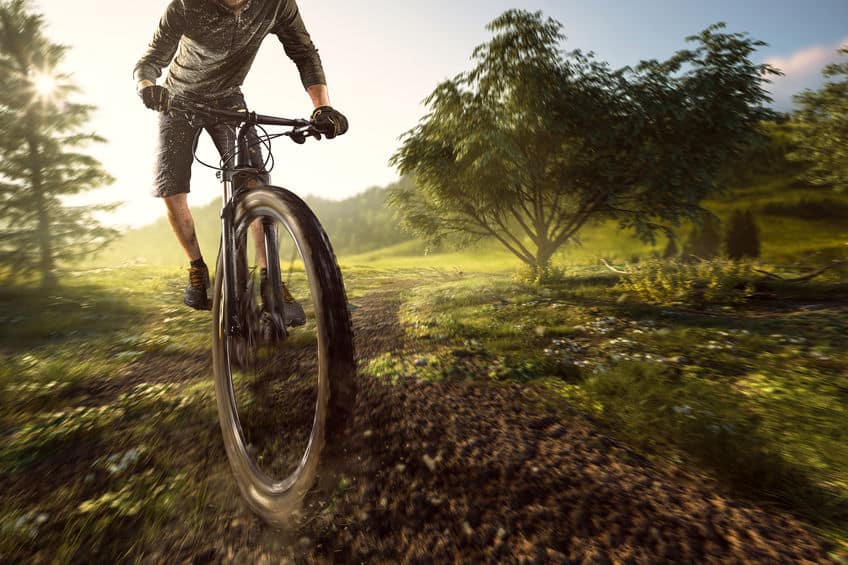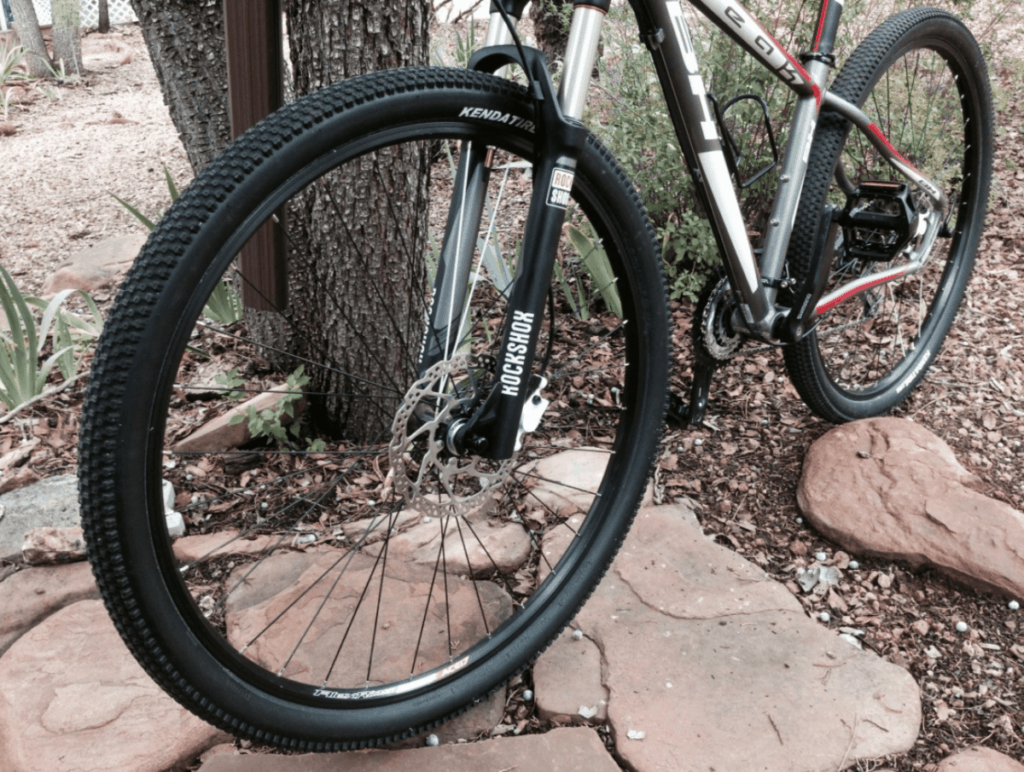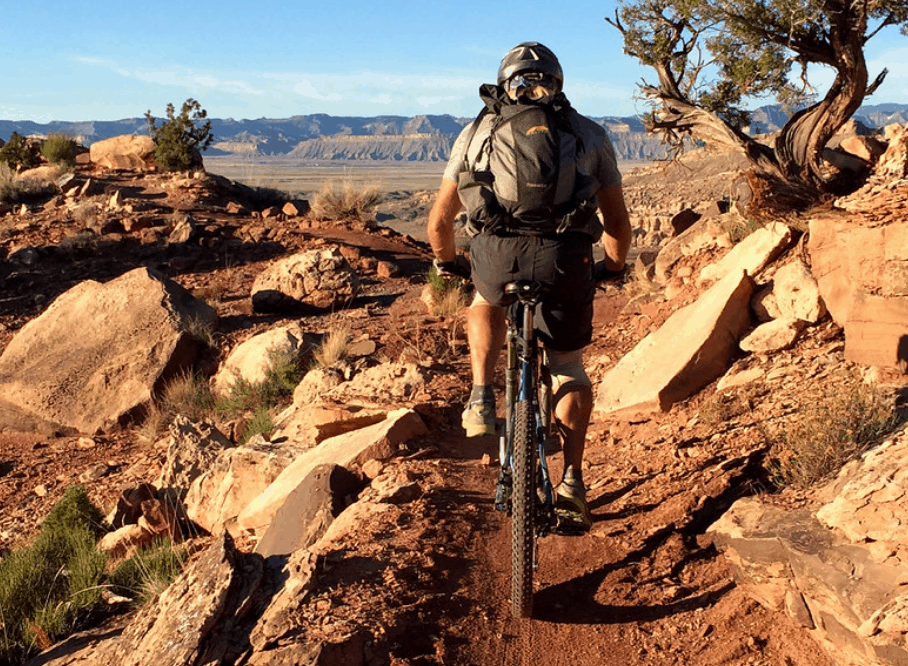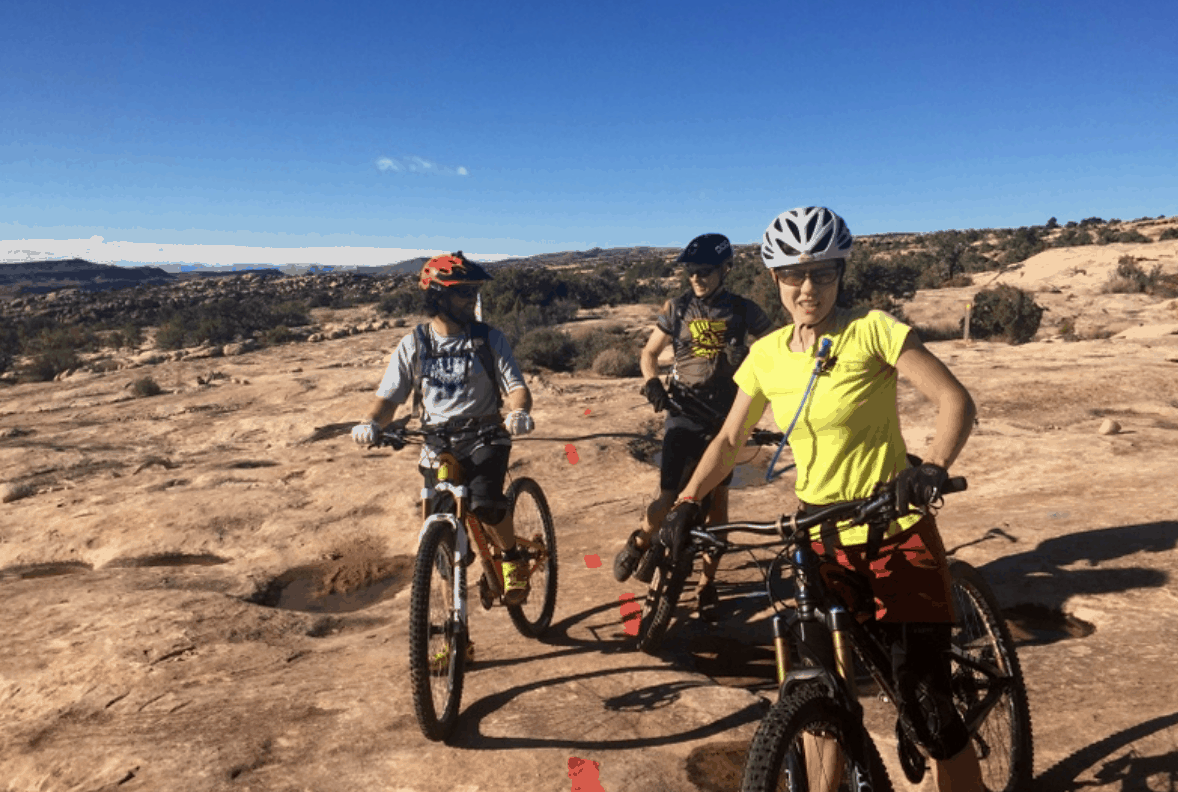Mountain biking can be a little overwhelming when you first get started. Riding a bike is second nature to most of us but there are certain elements in mountain biking that can be intimidating. Mountain bikes have different components and not all mountain bikes are built the same. Understanding your specific bike is key. Once you get on the trail you’ll also be challenged by steep climbs, different obstacles & trail conditions. Here are 11 tips that will help you navigate these elements like a pro so that your mountain biking experience is more enjoyable at the start.
- Braking Too Hard and Too Often
- Not Focusing On The Trail Ahead
- Feet Bouncing Off The Pedals
- Bad Weight Distribution
- Riding With The Wrong Tire Pressure
- Riding Too Tense On The Trail
- Failure To Bring Enough Nutrition
- Poor Climbing Fundamentals
- Forgetting To Check All Of Your Components
- Stopping In The Middle Of The Trail
- Trying To Pedal Through Technical Sections
1 – Braking Too Hard & Too Often
Hitting your first steep descent can be pretty intimidating if you are new to mountain biking. Riders will often apply strong pressure to the front brake and they’ll find themselves sliding out or going over the bars.
So how do you know how much pressure to put on the brakes? A simple strategy is to feather the brakes on and off when you first start riding. Rather than squeezing with a death grip and locking up that front wheel. Once you get a better feel for how much pressure you’ll need you can handle those descents.

Also, when you hit a steep descent it’s actually better to roll through rather than braking on the way down. This can feel scary as you will go fast. Trying to pause mid way with heavy brake pressure can cause you to go over the bars because your body position is already over the front wheel. So trust yourself and cruise down those hills.
2 – Not Focusing On The Trail Ahead
This may seem obvious but it’s very easy to get distracted on a mountain bike. You’ve got gears, brake and maybe a dropper seatpost levers you need to constantly adjust. You are also out in nature which offers it’s own distractions that will take your attention off the trail ahead.
As far as the levers go be sure to have handlebars set up so that you can easily access all of your levers without moving your hands too much. Once you get used to their positions you won’t need to look down to change gears or adjust your seat.
If you get distracted by nature or the area you are riding easily than you really need to make sure you constantly focus ahead on the trail while you ride. One bad wipe out from distraction will be a great learning moment on this front. Keeping your vision ahead on the trail will also help you pick safe and fun lines that will make your ride more enjoyable.
3 – Feet Bouncing Off The Pedals
Having your feet securely on the pedals is critical for you to safely ride. New riders might find it difficult to keep their feet on the pedals if they don’t have the proper equipment and foot position.
For the equipment you’ll want some riding shoes that have a thick rubbery sole. You can use regular tennis shoes but just make sure that the soles are nice and thick. For the pedals you’ll want a nice platform pedal with pins. The combination of a thick sole and platforms with pins will offer you great connect on the pedals.
As far as technique be sure to have your foot placed with the balls of your feet at the center of the pedal. If you go over jumps and bumpy terrain make sure you drop your heels to shift the body weight more firmly on the pedal. If your toes are pointed forward or down towards the ground you are more likely to bounce off the pedals.
4 – Bad Weight Distribution
Having bad weight distribution will cause you to crash while riding. As a beginner this is one of the first skills you’ll want to learn to make your rides safer.
When you are cornering you want to make sure you lean into those turns to keep both of your wheels securely on the ground. Having a dropper seat makes adjusting your body weight much easier. If you don’t have a dropper seat I would consider that the first thing you should upgrade on your bike.
If you are on a descent you really need to shift your weight to the back of the bike. This will allow you back wheel to be more secure on the ground and take your body weight off the front wheel. If your body weight is over that front wheel you can expect to be heading over the bars soon.
5 – Riding With The Wrong Tire Pressure
I learned this lesson the hard way when I first started riding. I got advice from different sources that advised me to keep my tire pressure low around 32-34 PSI. That actually makes sense for most riders but I’m a bigger guy and weight 210 pounds.

I was literally popping a tire about every third ride. It took me awhile but I learned that I need to make sure my tire pressure is around 40 PSI. What happened is that the tire pressure was so low that with my 210 pounds of body weight rolled through bumpy terrain I was more susceptible to pinch flats.
Tire pressure for mountain biking will vary depending on you and the conditions of the trails you’ll be riding. I recently wrote an article that explains the correct tire pressure you should use with a detailed chart. It gives you the right pressure for tubes and tubeless.
6 – Riding Too Tense On The Trail
If you are riding downhill on a new trail you will encounter sections with steep drops or blind turns. When you hit these spots its common for new riders to tense up and get scared. The last thing you want to do is tense up.
In order to move past these sections flawlessly is to stay relaxed on your bike. The best way to navigate through them is to move your body position basket and anchor that back wheel to the ground. You want your body flexible to maneuver around the back of the bike seat and flow with the trail
It’s easy to give this tip but not so easy to execute it. It took me a long time to feel comfortable riding down steep tough terrain. Over time I did realize that staying relaxed and focused was the way to go and soon I was handling tough spots with more ease.
7 – Failure To Bring Enough Nutrition
Unlike road biking, working out in a gym or playing a sport at a park mountain biking takes you off the grid. You will find yourself on long trails in the middle of nowhere sometimes. If you don’t have the right nutrition you will find yourself in a tough spot.
If you are riding a trail for the first time you should get an idea from others about how long the ride will take and the difficulty of the elevation. Once you have the time duration and elevation information you can pack your nutrition accordingly. Always err on the high side so you don’t fall short.
Water is critical and the most effective way to carry water on a mountain bike ride is using a camel back. They carry a ton of water and will keep you hyrdated until the end of the ride or at least until you find a watering station.
As far as energy, you’ll want to bring healthy snacks to reduce fatigue. Fatigue makes you more susceptible to crashes so addressing this is critical. Bananas, nuts, protein bars or a sandwich are just a few examples of fuel for the ride.
8 – Poor Climbing Fundamentals
There’s a few tricks to becoming a good climber on your mountain bike. Switching gears, gaining momentum and the restart and simple fundamentals that will help you handle the climbs with ease.
Once you see a climb in your sites you want to make sure you mentally prepare which gears you’ll be shifting into. You want to switch the gears seamlessly so that you avoid that loud popping noise. If you hear that noise you switched too late. You can pop a chain in those situations so be sure to switch gears while you climb smoothly.

If you are switching the gears the correct way you can keep your cadence at the same rotational speed. If you switch too slow you’ll be in a low gear and struggle to make the summit without walking your bike up the hill.
A simple trick to climbing better is gaining momentum as you approach the climb. Getting your speed up with help you get up a good portion of the hill before you have to switch gears. Don’t forget to be ready to switch those gears as you start to slow down.
Yikes! You tried to make it up the hill but you either lost to much speed or your chain popped off. So how do you avoid walking your bike to the top? Is there a way to ride up still? Yes, and here’s how you can do it.
Turn your bike at an angle so that you are not going straight up the hill. If you try to go straight up you’ll struggle to rotate those pedals and get the bike moving. Instead ride at an angle so that you are pedaling consistently again. Once you get going you can straighten the bike out and head up that mountain.
9 – Forgetting To Check All Of Your Components
In Most situations you will be traveling to the trails and transporting your bike in your car. You might be someone who has a bike rack or easy transport system but many new riders won’t be set up to transport easily.
In the process of stuffing your mountain bike into your car and taking off the front or back wheels you need to disassemble and reassemble the bike at the trails. Be sure to double check all of your bolts, wheels & triggers to make sure nothing loosened up or shifted a long the way.
Your bike components are one aspect of mountain biking but don’t forget you’ve also got a lot of gear on that needs to be checked as well. If you’re a beginner taking on tough trails I would recommend the following protective gear:
- Bike Helmet
- Elbow Pads
- Wrist Guards
- Gloves
- Knee Pads
- Shin Guards
- Mountain Biking Shoes
- CamelBak
Starting out you might not have all of these items but you must ride with a helmet. Be sure to check all of your protective gear and make sure its strapped on properly. You can easily experience chaffing or some gear could slip off during the ride and tie up in your wheel causing a real disaster.
10 – Stopping In The Middle Of The Trail
On a single track trail there just enough room for one bike and it makes it very difficult for bikers to pass each other. If you are in a situation where you need to stop be sure to move over to the side of the trail and allow other riders to safely cruise past you.
If you stay in the middle of the trail you could cause a crash if their is a blind corner and you are stopped just beyond it. Just be aware of where you are on the trail and find a safe spot.
Also if you are new you might be going slower than other riders out there. It’s good mountain biking etiquette to move to the side of the trail at a safe spot to let others pass you.
Don’t feel pressured to go faster on the trail. If you come out of your comfort zone as a beginner you are more susceptible to crashing. Don’t try to keep up with anyone as you are just getting rolling in this sport.
11 – Trying To Pedal Through Technical Sections
Pedaling through technical sections can be a recipe for disaster. You are lowering your pedals closer to the ground. If you are going over a root or a rock your pedal might clip it causing a pedal strike and then you will likely crash.
The tough part about this situation is that as a beginner you might not feel comfortable rolling through these areas fast. You need to build up speed to float over these sections and let your shocks do their job. At the beginning try to pedal as few times as possible. Start off with short sections of technical areas to work on your skills.
Once you start getting the hang of it you can add more speed before you reach that rock garden and cruise through it confidently.
Another tip is to get into a higher gear that requires less rotation of the pedals to get to a higher speed. If you are in a lower gear you will have a fast pedal cadence. This will increase your chances of a pedal strike.
Conclusion
I hope you found some value from these 11 tips. If you work on your mountain biking skills over time you can handle more advanced trails. As a beginner I would start off with some beginner trails that you can become familiar with riding. Once they get easy for you move on to the intermediate trails and then finally you’ll be ready for some steep advanced trails.

